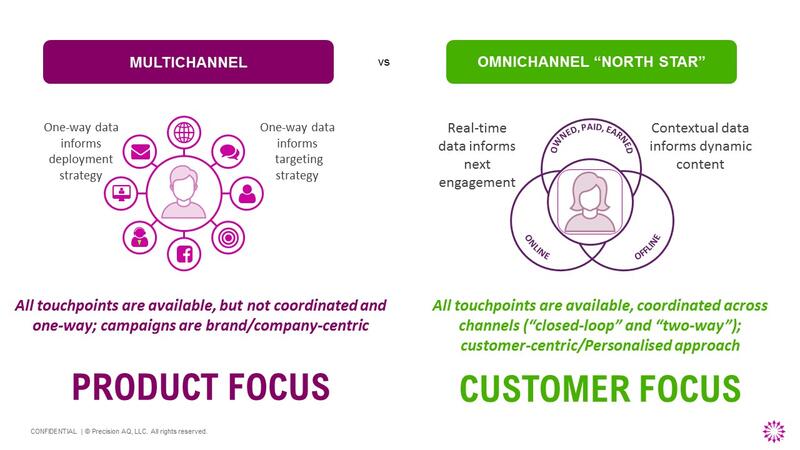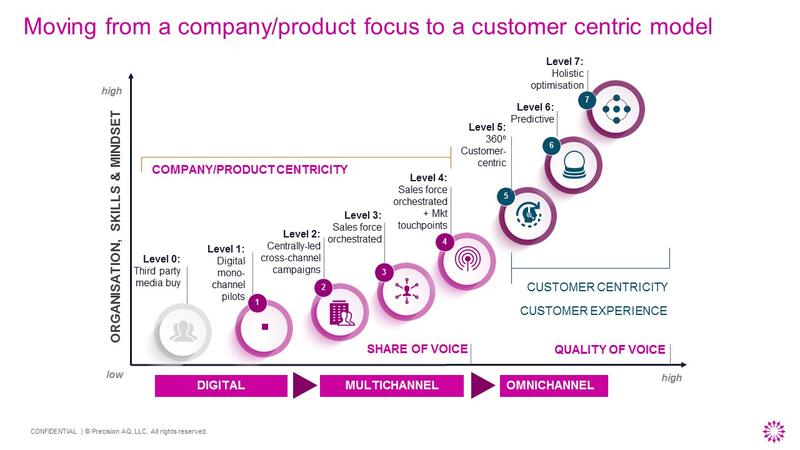The terms multichannel and omnichannel are often used interchangeably, but they have very different meanings. The below article by Precision AQ (the new name of Across Health), who deliver CELforPharma’s Strategic Omnichannel for Medical Affairs, Strategic Omnichannel for Pharma Marketing and Omnichannel Launch Excellence for Medical & Marketing, explains the terms and the differences.
What does multichannel mean?
Multichannel means that all available channels are used to communicate with your customers. However, these channels are deployed separately from each other, without coordination. This can result in a fragmented communication experience for the customer, where messages do not always align with each other.
What does omnichannel mean?
Omnichannel goes a step further than multichannel. It means that messages and channels are coordinated and personalised based on the individual needs and preferences of the customer. All communication channels are integrated and work seamlessly together, with the goal of creating a consistent and coherent experience for the customer, regardless of the channel used.
The difference between multichannel and omnichannel in pharma: a clear picture
The below image clearly illustrates the difference between multichannel and omnichannel communication in pharma. In multichannel communication (left), the different channels are separate and independent of each other. In omnichannel communication (right), the HCP is at the center and the channels are integrated and work together to provide a unified customer experience.

Going from multichannel to omnichannel in pharma
Achieving omnichannel customer engagement in the pharmaceutical sector is no easy task and only a few have accomplished it so far. This challenging journey requires a shift in focus within the entire company, from a product-oriented approach to a customer-oriented approach.
Although the goal is difficult to achieve, this does not mean that we should not move forward on this journey. Step by step, we can focus on improving customer-centricity and ultimately achieve successful omnichannel customer engagement.



